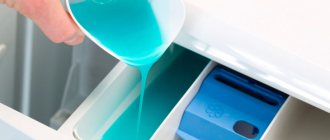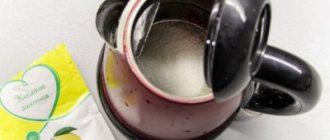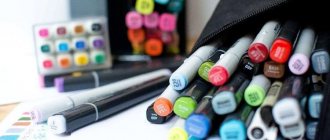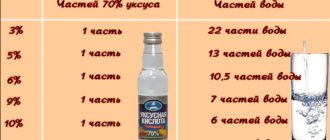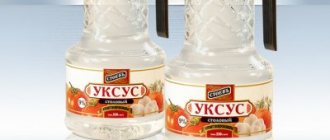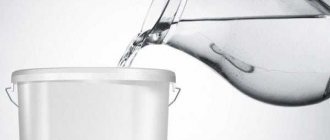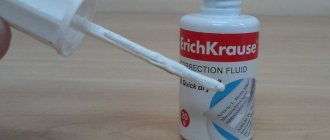Gouache paints
Gouache is a dense and opaque paint.
Once dry, it will be matte and velvety. It is perfect for paper, canvas, cardboard or smooth wood surfaces. Unlike watercolors, gouache paints have less binder, but much more pigments. Due to this, you can cover up unsuccessful areas, and you will be able to paint over even dark spots with lighter paint. The previous layers will not show through, the drawings will come out beautiful, bright and, most importantly, neat.
Store gouache in tightly closed containers at room temperature. It must be protected from cooling below zero. If it so happens that for some reason the paints (gouache) have dried out, what to do with them will be described below in the article.
Features of gouache and useful tips
The main difficulty of working with gouache is that the paint changes its color dramatically when it dries.
Therefore, it is difficult for an artist to monitor the correct relationship between colors and tone while drawing. As a rule, the following colors become light: chromium oxide, cadmium, cobalt, light ocher, golden and emerald green. They darken and then lighten again: specks, ultramarine, natural and burnt sienna. They acquire darker shades: Hansa yellow and orange.
Lightening and darkening paints are often diluted with zinc or silver white, which are available in the assortment of gouache paints. Glaze and semi-glaze paints require such “whitening”. Thanks to this, their hiding power increases.
To determine the color of dried gouache, you should use pre-prepared palettes. This will greatly simplify the drawing process for a novice artist. In general, working with gouache requires certain skills. Paints should be stored in tightly closed jars at room temperature, not allowing it to drop to zero.
If the gouache suddenly dries out, it can be easily restored.
For this purpose, it should be filled with water or a one percent solution of wood glue or gelatin glue. The paint dissolves within a few days, then you need to stir it thoroughly until a homogeneous consistency is formed.
It is recommended to save works written in gouache in folders. They cannot be rolled into tubes due to the fragility of the paint layer. In addition, you should not allow the paintings to rub against each other. To do this, you can use pads made of tissue paper. If the paint was applied in an excessively thick layer, it may crack or crumble.
Thank you for your attention! We wish you inspiration and creative success!
Source
Oil
In oil paints the binder is linseed oil. It is thanks to this component that paints harden to a stone state, after which they cannot be used.
This is why I recommend not squeezing a large amount of paint out of the tube.
Because then all the unused paint turns into solid masses that cannot be used in the future. And, by the way, they can only be cleaned with a hairdryer. But usually they just buy a new palette so as not to bother with dried material.
Cleaning dried oil is quite difficult.
If the paint has dried right in the tube, it cannot be used either. Although oil in tubes can be stored for many years, there is still a chance of hardening.
- For example, if the tube is not closed tightly.
- Or if there are cracks on the surface of the package, air also penetrates inside the package, causing the oil to harden.
How to restore dried oil paints?
Unfortunately, there can only be one piece of advice here: buy new tubes.
Regular tools will provide a strong grip
A pair of small pliers is the first thing many artists reach for when trying to unscrew a paint cap.
They are quite effective and often help solve the problem. Some artists even keep them in their paint box specifically for this purpose. However, the method is not perfect.
The main problem has to do with how you hold the tube. If you turn it, you can easily damage the surface and break the seal. Air will get inside, causing the pigment to dry out quickly.
To avoid trouble, watch your other hand, do not squeeze the tube too hard and apply the main force with pliers.
You can also squeeze all the paint up, roll up the empty end of the tube, and use it for a firmer grip (think of squeezing out the rest of your toothpaste).
You can also resort to using water or solvent to soften the paint that has dried inside the cap.
Don't have pliers? No problem (believe me, they are very easy to lose). Try the same thing with a clothes pin, nut cracker, or lobster tongs. In short, use anything you can use to get a tight grip on the lid.
Some even use fabric to prevent the cap from slipping in the hand. This could be an oven mitt, a textured rag, or even the cuff of the jeans you're wearing.
How to mix gouache correctly
It is best to mix or dilute gouache on a special palette. If it is not there, then an ordinary plate can be an alternative. The paint is very easy to clean.
When starting your work, first of all, mix the paint well in a jar, and only then transfer a small amount of it to the palette, and then mix it with water or other paint, obtaining the desired shade.
Gouache is diluted to the consistency of liquid sour cream, but you need to know when to stop – the paint should not become translucent, it should remain fairly dense. Liquidly applied gouache will leave dark edges when it dries. If the paint is applied too thickly, in several layers, it will not adhere well and will crumble like plaster.
What can you paint with gouache on?
You can paint with gouache on paper, cardboard, plywood, canvas or other surfaces. ... It is better to choose rough paper, then the paint will adhere more reliably to the surface and lie more evenly. On paper that is too smooth, gouache may crumble after drying, and during work it may lie unevenly or gather in “islands.”
Interesting materials:
What is the oxidation state of carbon in Ethylene? What is the college scholarship? Which side of the coin is heads? What is the relationship between metals and non-metals? What bond is formed between atoms with the same electronegativity? What is the strongest connection in Chemistry? What temperature should month-old chicks be at? What temperature should a chicken barn be? What temperature is considered a fever? What is the temperature of the outer core?
Techniques for using gouache
In order to get the desired result when painting with gouache and not get upset, I recommend following simple rules:
- Do not mix paint inside the jar
There is such a thing as a “palette”, this is some kind of base on which paints are mixed. The palette can be a purchased plastic palette, a piece of white cardboard, a white plate, sour cream caps, as I showed in the last article. Palettes are convenient not only for mixing, but also for diluting gouache to a liquid watercolor-like state.
You need to handle white gouache especially carefully, because... getting even a very small amount of a different color into a jar of white gouache will ruin the paint forever. It acquires a tint and can only be used to add colors similar to those that stained it to lighten them, giving them a “pastel” look.
- Close paint cans tightly
Gouache dries easily not only in the drawing, but also in the container where it is stored. If the gouache has dried out, then see the techniques for “reanimating” it below.
- Stir the paint before use
In its normal state, gouache should be similar in consistency to oil paints, i.e. creamy. If necessary, bring the taken part on the palette to a more liquid state.
- Do not mix different colors in the liquid state in the drawing
It is better to work in a drawing either with pure colors, or mixed on the palette, or overlapping an already dried layer, otherwise there is a high probability of getting “dirt”.
- Draw from dark to light
Gouache is not transparent and a new stroke covers the previous one well, so you need to write from dark to light tones, and not vice versa. That is, you need to start with darker paint tones, and place highlights and dark color accents at the end of the work. (In watercolor, we basically do the opposite.)
You cannot add black color to the shadow image - it will turn out dirty. For shadows, it is better to take a color from the opposite sector of the color wheel from the color of the object. This color is added in the required quantity to the main tone. Most often, blue, green or purple are used to depict shadows.
You also cannot use black to obtain a darker tone of the same color for the same reason - you will get dirt.
Wet gouache is brighter; when it dries, it fades due to the presence of chalk in it. Therefore, you should always choose colors that are more saturated than those that you want to see in the end.
Do I need to dilute gouache with water?
If until now you treated gouache as an exclusively “children’s” paint, then you were only partly right. This paint is popular in children's art - it is convenient to paint with, working with it does not require specially prepared surfaces, solvents or fixatives, and you can quite easily correct something in the drawing. But at the same time, famous artists painted pictures with gouache, using the features of this paint. Henri Matisse, Picasso, Marc Chagall, and Georges Rouault used the gouache technique. The technique of creating gouache has been around for many centuries - it was used in Europe back in the Middle Ages.
Nude 2. 1952 Henri Matisse.
Pablo Picasso. Boy with a dog. 1905 Cardboard, gouache, pastel.
Gouache is a universal art material, suitable for both beginning artists and professionals, and allows you to master artistic techniques typical of other materials. Heavily diluted gouache resembles watercolor, and thick strokes of gouache paint resemble oil. There are several types of gouache: art, poster, for children's creativity and acrylic.
To work with gouache, you should know several features of paint and painting techniques with it. Gouache is an opaque paint that contains white, so you need to paint starting with darker tones and moving on to lighter ones. With Itten's color wheel in front of your eyes, it's easy to figure out how to mix colors and get new shades. Neighboring colors - those that are in adjacent sectors of the circle - mix well. To create shadows, it is better to take a color from the opposite sector and add it to the main tone. For shadows, blue, green or purple colors are often used, but not black. Do not use black to obtain a darker tone - it will turn out muddy.
Gouache dries quite quickly; corrections to the drawing can be made when the paint has completely dried. And then all that remains is to moisten the brush in warm and clean water, squeeze it a little and wipe off the paint in the place of the mistake. Using the same method, you can, for example, shade contours. Wet gouache is brighter; when it dries, it becomes whiter due to the chalk it contains. This must be taken into account when choosing a color. Too soft brushes for gouache are not suitable; it is better to take kolinsky, goat and synthetic brushes - such brushes are suitable for working with a wet brush. You can paint with gouache not only with brushes. A foam sponge, special rollers, crumpled paper napkin or tightly folded fabric are all suitable for gouache and allow you to achieve interesting textures. Keep in mind that gouache thickens over time. You can return the original consistency by adding half a teaspoon of warm boiled water to the jar (if we are talking about a standard size jar). Then you need to cover the paint, set it aside for half an hour, and then mix very well.
We wish you creative success in working with gouache!
Lil School
Lil School is the first online creative thinking platform for children.
Diana Kislova
The meaning of gouache
Drawing is one of the ways to complete a program for improving the body.
Drawing is a big and serious job for a child. Even scribbles contain very specific information and meaning for the little artist. The drawings strictly reflect the stages of development of the child’s visual-spatial-motor experience, which he relies on in the process of drawing.
Why and why do children draw? Children's drawing helps coordinate vision and movement, master shapes, and develop sensory-motor coordination.
Drawing requires the coordinated participation of many mental functions. The famous German teacher Friedrich Adolf Wilhelm Diesterweg believed: “The one who draws gets more in one hour than the one who just watches for nine hours.”
The first paints that a child gets acquainted with and learns to paint with are gouache .
Gouache (French Gouache, Italian guazzo water paint, splash)
- a type of watercolor paint that is denser and more matte than regular watercolor.
The term originally arose in the 18th century in France, although the technique for creating this paint is much older - it was already used in the 16th century in Europe.
There are several types of gouache : for children's creativity, art, poster. This paint is thick and before painting it needs to be diluted with water (it should look like liquid sour cream)
.
Gouache is a covering paint , opaque, so after drying it can be applied color upon color. To obtain a lighter tone of a particular color, white is added to the paint. In this case, you need to take a little paint and gradually add white to it, achieving the desired shade. In addition, it is suitable for painting crafts made of cardboard, fabric and clay, and after painting, the paint can be easily washed off hands, brushes, furniture and can be easily washed off clothes. Gouache is not subject to mandatory certification - it is a harmless paint.
Even if the baby decides to lick it to check what it tastes like, nothing will happen to him. Gouache is a type of adhesive water-soluble paint, denser and more matte than watercolor. The main qualities of gouache are saturation , color brightness, hiding power.
Gouache has the following consumer properties:
- exceptional color saturation and purity
— uniform application on various surfaces
- excellent covering power
— the colors mix well with each other, allowing you to get new pure shades
— when dry, they give a beautiful matte tone and acquire a velvety surface.
Gouache is sold in diluted jars, i.e. ready for use.
Gouache can be used not only on paper, but also on primed (non-washable)
canvas, fabric, cardboard, plywood.
Children in all kindergarten groups paint with gouache As a rule, kids receive one paint, but its color may change at each lesson. By the end of the year, you can give 2 paints (you should give two brushes)
.
In the second younger group, children are initially given 2-3 colors, and by the end of the year there may be 4-6. The same, and in some cases more, quantities of paints must be prepared for drawing in the middle group (of course, there are activities that require less paints)
. From the second younger group onwards, children should be taught to rinse their brushes before picking up paint of a different color.
4-year-old children who have moved to the middle group have approximately the same drawing skills acquired in the younger group. At this age, children are more assiduous and observant, so the objects depicted appear to have more small details. The emphasis is on the depiction of several objects at once in one drawing, for example, if before it was one Christmas tree, now it is a spruce forest or the sun with clouds.
In the senior and preparatory groups, when painting with gouache, 4-6 colors can be given in finished form. Children learn to prepare the missing colors themselves by mixing paints on a palette (you can use white tiles, light plastic or a white plate or saucer). First, children do this with the help of a teacher, and then independently. At the end of the lesson, the remaining clean gouache must be poured from the sockets into empty bottles (by color)
and close well.
In kindergarten, round brushes are used: for children of junior and middle groups - one, preferably medium size, from 10 to 14; for children of the preparatory group - two sizes: small (2-6 numbers)
and large
(12-16 numbers)
.
For painting large surfaces (ground, grass, sky, etc.)
you can use a flute
(a brush with a flat bristle, as opposed to a regular round brush)
.
Much attention has long been paid to working with a brush in decorative painting, where the repetition of elements makes it possible to practice the techniques and quality of painting with paint.
At one time, E. A. Flerina pointed to decorative drawing as one of the ways to develop techniques. After completing a number of decorative works, the children’s movements became bolder.
Effective mastery of technical skills and abilities is possible only by establishing the sequence of children’s mastery of drawing techniques, distributing tasks for each group of kindergarten, taking into account the age-related characteristics of the development of visual activity.
When teaching drawing techniques to a child, it is necessary to take into account that the movements of the child’s hand, which determine the image, are just beginning to develop. And this process needs to be given special attention.
A small child does not know how to work with a brush, does not know the hand movements necessary to convey the shape of objects. And if such movements appear in the child’s experience, then they are random in nature and he most often cannot repeat them consciously. The child does not know how to control hand movements to achieve the desired quality: lightness, unity of movement, a certain tempo, rhythm, etc., therefore he does not realize the dependence of the quality of the image on the quality of hand movements when drawing.
The child learns all this gradually in classes during the process of creating an image. From lesson to lesson throughout his stay in kindergarten, the child develops the necessary technical skills and abilities.
As the child masters hand movements, he increasingly easily and freely depicts objects and phenomena of the surrounding life, expresses his intention in the drawing.
When working with gouache, you need to know and take into account the following rules:
• Success depends on the quantity, richness and variety of shades and colors that the child, having created on the palette, transferred to paper or cardboard;
• You don't have to start working in bright areas. But the rule is “from general to specific”
, from larger volume to smaller, must be observed;
• Having painted the object large-scale with the original color, smaller and numerous strokes lighter or darker in tone or color are placed on top.
• Since the very first layer of paint will still completely cover the original drawing, when making the first sketch, you should draw general contours, without details.
gouache strokes to a drawing many times and very thickly , then after drying the paint layer will begin to crack and fall off;
• If the area to be painted is large and requires a completely smooth and monotonous coating, then gouache can be applied with a foam swab with a minimum amount of water in the paint.
• After complete drying, gouache
• The types and shapes of gouache greatly depend on the type of brush and the degree of its hardness.
How do you prepare for a drawing class?
1. In accordance with the type of drawing, the topic of the lesson, prepare paper of different formats, backgrounds (you can use colored half-cardboard or tint the paper with watercolors, gouache paints , ink, etc.)
2. Gouache paints are diluted with water until the thickness of liquid sour cream; To prevent paints from crumbling after drying, they can be diluted with milk. For activities with children of the younger group, gouache paints are poured into small jars so that the water does not evaporate; you can cover them with paper or newspaper dipped in water.
3. Water for washing brushes is poured into 0.5 liter jars. In younger groups, if children paint with paint of the same color, the water is not prepared. You can place several jars on one table so that children can change it as the water gets dirty.
4. The drawing paper must be signed.
5. Paint brushes are placed on stands; in the younger group, children paint with one thick round or medium-sized flute brush (No. 4 - 5), and older preschoolers paint with two brushes: a thick (№ 3 – 5)
and thin
(№2)
.
6. At the end of the lesson, viewing and analysis of children’s drawings is organized, so you should think about where the finished works will be placed (on the table, on easels, on the board, etc.)
.
7. Modern requirements for conducting visual arts classes provide for a connection between visual arts and other types of children’s activities: play, music, theater, so the teacher does not say that the lesson is over, he creates the conditions for the transition to another type of activity or to reflection.
Gouache paints can most likely rightfully be called one of the most popular types of paints all over the world, not only among masters, but also among those who have at least once touched paper, water, a brush and paints. So how do you paint with these paints and what do they consist of?
What to do if the gouache has dried out
Sometimes, when a jar of paint is not tightly closed, the gouache can dry out. You can put it into working condition in this way:
- pour a little water (it should cover the paint a little);
- close the lid tightly and leave the jar in this state for a day;
- if the next day the paint remains thick, you can add a little more water and leave the jar for the second day.
If, thinking about what to do if the gouache has dried out, you decide to use this dilution method, remember: excess water will make the paint layer thin and translucent. After drying, the paint layer will become dirty and crack.
Thus, even the hardest paint can be restored more than once. You need to understand that for professional artists working on works of art, reclaimed paint is not suitable. This option is best used for children's creativity.
What does caramel gouache mean?
Caramel and honey gouache are made from natural ingredients, such as confectionery molasses, special natural plasticizers and plant binders. The filler is mineral pigments in combination with white enriched clay with special micromarble additives and mineralized water.
Interesting materials:
What to do if the dish is too spicy? What to do if Brawl Stars doesn't drop fighters? What to do if your eyebrows are too long? What to do if the broth for jellied meat turns out cloudy? What to do if the turtle died? What to do if your order from Aliexpress does not arrive for a long time? What to do if Delivery Club delivery is late? What should I do if another display is not detected? What to do if the screen turns black and white? What should I do if Excel says that part of the array cannot be changed?
How to open gouache or if it does not open
Irina Ivlieva | Right-hemisphere drawing pinned post
What to do if the gouache has dried out? How to open a can of paint if it won't open? Read until the end to find answers to these questions.
I’m getting ready for the test drive “Profession: Right-Brain Drawing Trainer,” which will take place on January 30 and 31.
By the way, if you are interested in how you can make money through drawing, then do not miss this event, which takes place only once every 3-4 months.
I'll leave a link here to book a place:
So, while preparing for a test drive, I came across a jar of dried paint. What do you think? Did I throw it away or resuscitate it?
I decided to record a video for you in which I answer the question:
What to do if the gouache has dried out? How to open a can of paint if it won't open?
Watch and like if it was helpful
What to do with dried gouache (using a water bath)
There is a second way to dilute gouache - a water bath. You need to prepare a metal steamer (it can be replaced with two containers of different diameters), toothpicks and boiling water. Step-by-step instructions for softening gouache look like this:
- into a jar with dried gouache you need to pour just boiled water, which will completely cover the paint;
- jars of paint are placed in a pan with a smaller diameter. Next, a larger diameter pan is filled halfway with water; a second pan with paints must be placed inside;
- the caps can also be placed in water so that the paint comes off from them;
- bring the water in the container to a boil and reduce the heat so that the liquid bubbles slightly;
- cover the container with a lid;
- the liquid will boil away, so hot water must be added as needed;
- Toothpicks are needed to check how much the paint has softened.
Hot water works wonders
The disadvantage of using pliers is that they can break the lid. After you open a dried cap several times in this way, it will be difficult to unscrew it, even if it is not dried.
Therefore, it is recommended to soak dried paint for a few minutes.
The caps dry to the tubes because the paint hardens between the threads of the cap and the tube. The heat will help steam it, making it easier for the pliers.
To do this, lower the tube upside down into hot water or boiling water. After a couple of minutes, you can try to unscrew the lid with pliers. If it still does not respond, you can repeat the procedure.
How can you remove mold from paint?
Wipe the problem area with chlorine solution, let it sit for 5 minutes, then rinse. If the stains have disappeared, we are dealing with mold. Bleach should be used to remove all existing stains in the same way (it should be diluted at the rate of one part bleach to three parts water).
Interesting materials:
How to properly trim onions for winter storage? How to communicate with a girl correctly? What is the correct way to dress or wear it? How to properly put on a diaper for a newborn? How to format a play correctly? How to correctly formulate tasks in elementary school? Which is correct, about three hundred or three hundred? How to properly calibrate an accelerometer? How to open and close a laptop correctly? How to send a parcel in a package correctly?
Why does gouache dry out?
The composition of gouache includes water, coloring pigments, and an adhesive base. The paint is suitable for painting on different surfaces - paper, glass, plywood, fabric, etc. There are three main reasons for drying out:
- expiration date of paints (initially displayed on the packaging, after opening the container it is significantly reduced);
- a loose lid (a common reason why the composition has to be restored using additional means);
- low quality products.
To reduce the likelihood of paint drying, it is important to follow several rules for handling paints, and do not leave jars open or with the lids not tightly screwed on.
How to open a jar of acrylic?
Dear craftsmen, I have accumulated several jars of acrylic paint, as well as one jar of varnish (acrylic) that do not want to open (apparently the lid has dried up. Is there a way to open them without severely damaging the jar (plastic)? Thanks in advance for your answers.
Tap with a hammer, move a sharp object under the lid, and try to dip the lid into boiling water. In general, I have a large plumbing key; I use it to clamp it and open it. Oh, I also use IKEA scissors, there are teeth between the handles, I clamp them in and open them.
A familiar story))) If pliers (large ones) don’t work, the front door and jamb are used))) Holding the door with one hand, clamp the lid of the jar with the door and slowly turn the jar with the other hand. Always helps out
my God! I thought I was the only one))))
Thanks, I'll try)
I open it, grasping it with a piece of genuine leather, try both sides.
a jar under running hot water, pliers, manly strength when the jigsaw file just doesn’t fit into the crack
Thank you! The hammer helped me a lot)
To avoid this situation the next time you close the lid, put 2 layers of polyethylene. One layer will stick to the lid and the other will stick to the jar, making it easy to open the jar.
Also, polyethylene will create a seal, and the fact that it will dry out less in the jar.
Good idea. Thank you.
First aid is to tap the lid with a hammer, most likely there is something stuck there, you can knock it off. or just start by grabbing the jar and hitting the side of the lid hard on the table
if it doesn’t help, use the other above methods with hot water and flares
Well, in general, of course, you need to wipe everything down before closing
All ways to dilute if it's dry
Before “reanimating” the paint, you must carefully inspect the container. There should be no external damage or cracks, due to which the gouache could quickly deteriorate again.
If the pigment has only thickened a little, you can try placing the container in a warm place - on a sunny windowsill or near a radiator, and wait a few hours.
Using water
Gouache is a water-based dye. Plain water allows you to quickly dissolve the pigment without ruining it. How to make paint workable:
- inspect the container;
- pour water - the liquid level should slightly cover the dried pigment;
- close the lid tightly and leave for 24 hours at a temperature not below zero;
- If after the prescribed time the paint remains a little dry, the procedure must be repeated.
Water is used most often. This is an affordable, economical and environmentally friendly solvent that will not harm the pigment and will maintain brightness and other properties.
Attention! It is important not to pour too much liquid. If you overdo it, the layer will become light, transparent, and after drying it will begin to crack even on paper.
Water bath
An additional recovery method is a water bath. First, you should prepare a metal double boiler (combine two metal containers that differ in diameter), boiling water, and toothpicks. Instructions:
- Boiling water is poured into the jar, slightly above the level of the dried pigment;
- the container is placed in a saucepan of a smaller diameter, the second one of a larger diameter, filled with water, and the structure is placed on the fire (if the lids are placed in liquid, the old layer will come off);
- bring the water to a boil, reduce the heat to low - the liquid should bubble a little;
- cover the structure with a lid;
- water is added when necessary;
- After some time, use a toothpick to check the degree of dissolution of the liquid in the paint.
If the pigment is not too dry, you can make liquid paint in 20 minutes. If the composition can be tapped, it will take at least an hour. The main indicator is stirring with a toothpick until smooth.
“Resuscitation” of gouache
In my “bins” there is a box of gouache purchased back in 1972, its composition has partially changed, but the gouache of that time is still good. How did it happen?
Firstly
, I periodically check all the jars of my gouache and add a little boiled (or even better distilled) water and knead.
Secondly
, if the gouache in the jar has dried out or came to me dry, I add warm boiled water so that it barely covers the paint and let it sit for several days. Then I try to stir the paint with a stick until smooth.
I use wooden kebab skewers as chopsticks. (I use them often for different purposes, so I always have them in stock.)
If the first time it is not possible to achieve homogeneity, and all the water has been absorbed, then I add a little more, again let it sit for about a day and stir again.
If after three such approaches it was not possible to revive the gouache, then all that remains is to throw it away (but this has never happened to me).
Third
. When I was preparing this article, I wondered how others solved this problem and found a way with a water bath. I’ll say right away that I haven’t tried that.
The essence of the method is as follows:
- A jar or several jars of dried gouache are placed in a container of water, and this container is placed in a water bath
- Add boiling water to a jar of dried gouache and heat it over very low heat until the gouache “blooms” (i.e., so that the water penetrates the gouache and it again becomes like sour cream in consistency). The heating time in a water bath depends on the degree of drying of the paint. It may take even more than an hour for paint that has dried to a “knocking” state.
- The “blooming” gouache is removed from the container in a water bath and kneaded until smooth.
How to dilute gouache if it is dry
To restore gouache, you will need ordinary water. You should act in this sequence.
As a result, the paints acquire a consistency suitable for painting. You can safely pick up a brush and enjoy working on your home masterpieces.
Here's how to dilute gouache in a water bath. To do this, you will need boiling water, a metal steamer or 2 pans of different diameters, and toothpicks. The process of softening dried gouache is performed as follows:
It will take about 20 minutes to soften gouache that is not too dry. If it has dried out too much, then you will need to “simmer” the jars in a water bath for at least 1 hour. The main thing is that after this procedure the gouache is easily stirred until smooth.
Knowing how to dilute dried gouache, you will significantly save on creative materials. As a result of diluting with water, the dried gouache will again acquire a liquid consistency, suitable for comfortable drawing. When working with this paint, be sure to protect your hands and clothes, since it is difficult to wash off and wash off.
Reading today
Prevention of drying out
Masters do not advise mixing shades inside a container - for this there is a special device called a palette. If it is not available, any smooth surface (plate, board, small tray, etc.) will do. Before starting work, each color is thoroughly mixed in its own jar, then some is transferred to the palette.
The gouache is not diluted too much; the consistency should resemble thick sour cream. Painting from jars is not recommended - in an open container the pigment dries faster and the paint can mix with other colors. It is important to collect containers after work, close each jar tightly, and check it.
Jars should not be placed in places where the temperature may be low (below zero). It is sufficient to store at room temperature. You can even use very old kits, including Soviet ones. The main thing is to constantly check the condition of the pigment, add a little water (preferably distilled) if necessary, and mix thoroughly until smooth.
Attention! Acrylic gouache cannot be diluted using these methods. The pigment has a special composition, which water will turn into a hard mass unsuitable for painting.
Thinning paint is not suitable for professional artists. Despite the simplicity of the technique, the pigment is diluted and slightly loses color saturation and other properties. These methods are suitable for amateur drawing or creativity with children.
Comments
“Network publication “Woman’sDay.ru (Woman’sDey.ru)” Certificate of registration of mass media EL No. FS77-67790, issued by the Federal Service for Supervision of Communications, Information Technologies and Mass Communications (Roskomnadzor) December 13, 2016 16+.
Founder: limited liability company "Hirst Shkulev Publishing"
Editor-in-Chief: Dudina Victoria Zhorzhevna
Copyright (c) Hirst Shkulev Publishing LLC, 2022.
Any reproduction of site materials without the permission of the editors is prohibited.
Contact information for government agencies (including Roskomnadzor):
Source
Prevention
It is best not to let the cap dry out. Artists have been using one trick for many years to prevent such difficulties. It's time for me to reveal this secret weapon... Vaseline!
Before screwing on the lid, wipe the inside of the lid to remove any remaining paint. Then, simply rub Vaseline (or any other Vaseline product) onto its threads.
This is a real lifesaver and a very good habit to develop. Glycerin, a drop of olive or any other cooking oil will also cope with this task.
Posted by Marion Boddy-Evans
Gouache
Gouache dries out quite often. And often this comes as a surprise, because even if you use gouache every week, it can become cracked and lose its plasticity.
Why does this happen and how to restore dried gouache?
Remember: when working with gouache, you cannot use hot or even warm water! This dries it out significantly and contributes to the formation of mold in the jars.
If the gouache has dried and its surface is covered with cracks, you need to add a teaspoon of boiling water, close the lid tightly and leave the paint overnight.
The next day it will be like new. To restore plasticity, you can add a drop of PVA glue along with boiling water. But just boiling water will be enough.
How much do professional gouache paints cost?
Professional gouache – buy professional gouache for drawing at a competitive price in the Komus online store 690 ₽/set.
Interesting materials:
What does it mean to fly like plywood over Paris? What do intermediate results mean in public services? What does Pronation mean? What does firmware mean? What does it mean to listen to a voice message in 600 roaming? What does Rise and Shine mean? What does anti-hair growth mean? What does percentage mean in computer science? What does it mean to check MD5? What does verification code mean?
For household paints
During repair and finishing work, dyes with a classic composition of drying oil and various types of pigment substances are used. Such paints require thinning for a number of reasons:
- the paint is too thick. Some types are sold in paste form;
- you need a more liquid form for priming or applying a base coat;
- wood is being painted, but it is not advisable to apply a thick layer on it - the paint will fall off;
- you need to dilute the thickened residue from a previously used jar.
Turpentine
This substance based on pine resins is widely used as a thinner for oil paints. Turpentine emits a characteristic odor. It should be used in well-ventilated areas. Purified turpentine reduces the drying time of paint. Depending on the composition, it is divided into several types. The following options are used for diluting coloring compounds:
- Woody . Made from various parts of a tree such as bark or branches. The quality is average.
- Stump. The main raw materials are coniferous tree stumps and other residues. The quality of this turpentine is the lowest.
- Turpentine. It is extracted directly from pine resins, and its composition is almost 100% a mixture of essential oils. Has the best quality. Paints diluted with such turpentine do not lose their quality
White Spirit
This solvent has the following characteristic features:
- There are varieties without odor;
- the evaporation rate is lower than that of other solvents, which allows you to work at a measured pace, focusing on the result;
- does not change the color and tone of the dye;
- the standard solution is a weak solvent, but the purified version does the job well;
- affordable price;
- reduces paint consumption.
White spirit is used for various purposes, such as:
- creation of organodispersion when combined with paints and varnishes.
- Cleaning working tools after painting is completed.
- To obtain a grease-free surface for applying varnish.
- For diluting drying oil, varnish, enamels and other similar substances.
- As a solvent for rubber, alkyds and epoxides.
"Solvent 647"
When using this type of solvent, it is worth considering the following:
- if the substance is added excessively to the paint, its properties will deteriorate. It is imperative to do test mixing to determine the proportions;
- has an unpleasant odor;
- flammable;
- used as a degreaser for the surface to be painted;
- used to bring paint to the primer solution;
- enhances paint absorption by the surface;
- requires thorough mixing when combined with paint to obtain a homogeneous mixture.
Gasoline and kerosene
This option is used only in extreme cases in the absence of other types of solvents. These substances are very volatile and actively evaporate at room temperature. Their vapors are highly toxic and quickly cause poisoning, accompanied by nausea, dizziness, headaches and other symptoms. In addition, they are very flammable, and in high concentrations they are explosive. When thinning old thick paint, kerosene remains the best solution. Gasoline also gives the paint a matte finish, which can be used for decorative purposes.


